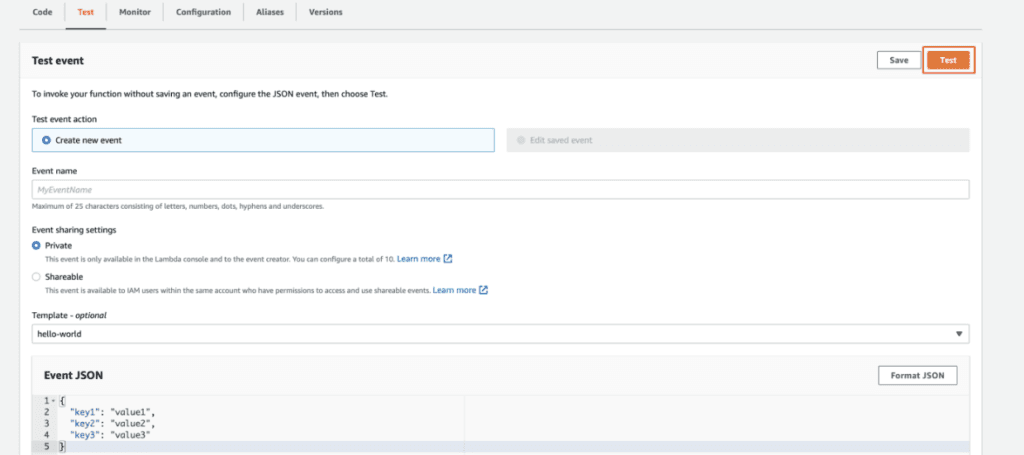INSIGHTS
4 min read

Published on 10/04/2022
Last updated on 03/21/2024
OpenTelemetry and AWS Lambda
Share
Many organizations are developing distributed applications based on a serverless microservice architecture, which includes AWS Lambda and other managed AWS services.
Organizations dealing with distributed architecture face a variety of operational challenges, including how to resolve availability and performance issues quickly. This means that when organizations attempt to monitor these applications, they want to understand the application’s health and pinpoint services that are impacted due to a performance bottleneck or an error rate increase that can affect their customers.
However, not all organizations can afford to make large code modifications in their current pipelines to add greater observability, despite the fact that organizations want deeper visibility into the behavior of their systems.
In this walkthrough, we explain how to send telemetry data from AWS Lambda Nods.js functions to backends using OpenTelemetry and Lambda wrappers, without having to change a line of code.
The code on this page was uploaded to a GitHub repository, which you can use to view the whole project if needed.
Project Setup
Let's create a new directory for our project, and run the following command inside of it:npm init -y"dependencies": {
"@opentelemetry/api": "^1.1.0",
"@opentelemetry/auto-instrumentations-node": "^0.30.0",
"@opentelemetry/exporter-trace-otlp-http": "^0.28.0",
"@opentelemetry/instrumentation": "^0.28.0",
"@opentelemetry/sdk-trace-base": "^1.2.0",
"@opentelemetry/sdk-trace-node": "^1.2.0"
}npm installAdding a Lambda wrapper
This file contains all the OpenTelemetry logic, which will enable tracing. So let’s add the following to a new file called lambda-wrapper.js:const api = require("@opentelemetry/api");
const { BatchSpanProcessor } = require("@opentelemetry/sdk-trace-base");
const {
OTLPTraceExporter
} = require("@opentelemetry/exporter-trace-otlp-http");
const { NodeTracerProvider } = require("@opentelemetry/sdk-trace-node");
const { registerInstrumentations } = require("@opentelemetry/instrumentation");
const {
getNodeAutoInstrumentations
} = require("@opentelemetry/auto-instrumentations-node");
api.diag.setLogger(new api.DiagConsoleLogger(), api.DiagLogLevel.ALL);
const provider = new NodeTracerProvider();
const collectorOptions = {
url: "<backend_url>"
};
const spanProcessor = new BatchSpanProcessor(
new OTLPTraceExporter(collectorOptions)
);
provider.addSpanProcessor(spanProcessor);
provider.register();
registerInstrumentations({
instrumentations: [
getNodeAutoInstrumentations({
"@opentelemetry/instrumentation-aws-lambda": {
disableAwsContextPropagation: true
}
})
]
});Adding a simple handler
Let’s add a simple handler that will serve as a Lambda function that contains a simple GET request. Create a file called handler.js:"use strict";
const http = require("http");
module.exports.hello = async (event) => {
http.get("http://aws.amazon.com");
return {
statusCode: 200,
body: "Success!"
};
};Deployment
There are multiple ways of deploying, but we will be using Serverless Framework for ease of use. Let’s create a file called serverless.yml:service: lambda-otel-native
frameworkVersion: '3'provider:
name: aws
runtime: nodejs14.x
region: '<your-region>'
environment:
NODE_OPTIONS: --require lambda-wrapperfunctions:
lambda-otel-test:
handler: handler.helloserverless deployRunning the Lambda function
We can now invoke the newly deployed Lambda function by using the AWS Console UI, and we should expect to see spans related to the invocation of the Lambda function.
[caption id="attachment_2098" align="aligncenter" width="1024"] The AWS console UI for invoking the Lambda function[/caption]
The AWS console UI for invoking the Lambda function[/caption]
 The AWS console UI for invoking the Lambda function[/caption]
The AWS console UI for invoking the Lambda function[/caption]
Visiting the backend to view our traces
The backend should receive traces produced by OpenTelemetry from our Lambda function!

Subscribe to
the Shift!
Get emerging insights on emerging technology straight to your inbox.
Unlocking Multi-Cloud Security: Panoptica's Graph-Based Approach
Discover why security teams rely on Panoptica's graph-based technology to navigate and prioritize risks across multi-cloud landscapes, enhancing accuracy and resilience in safeguarding diverse ecosystems.

Related articles

Subscribe
to
the Shift
!Get on emerging technology straight to your inbox.
emerging insights
The Shift keeps you at the forefront of cloud native modern applications, application security, generative AI, quantum computing, and other groundbreaking innovations that are shaping the future of technology.





